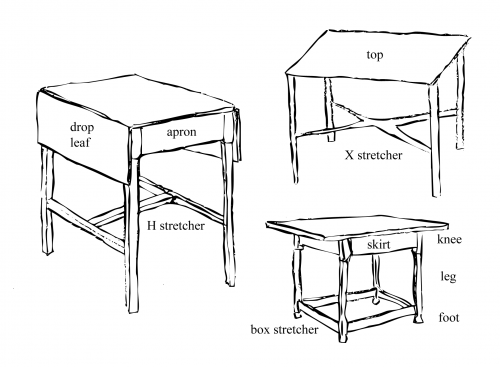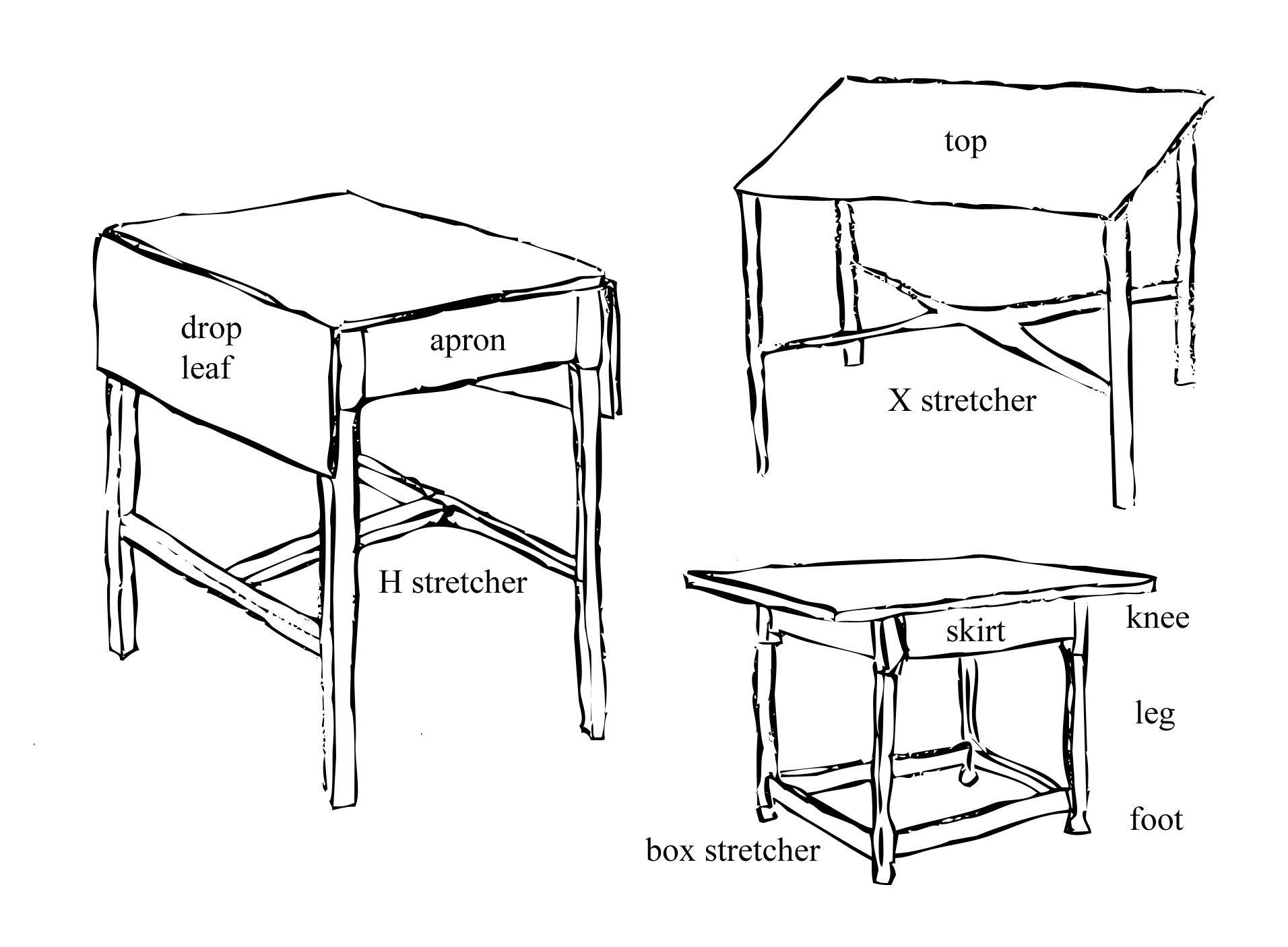
Tables are a type of furniture which have innumerable variations, types and styles. Nonetheless, some basic parts show up in the majority of tables, especially the kinds which find their way onto the theatrical stage. Knowing the names of these parts is helpful for facilitating communication between designers, artisans and other members of the team; if the set designer asks for the apron to be smaller, you want to know which part you should change. What follows is some quick definitions of the parts in the illustration above.
top – the flat surface of a table
apron, skirt or frieze – the under-framing which connects the legs to the top
leg – the main vertical piece which supports the top and raises it off the floor
knee – the upper portion of the leg
foot – the bottom part of the leg which touches the floor. A table may have completely straight legs with no distinct knee or foot.
drop leaf – a portion of the top which overextends the apron and can be hinged down to take up less space when not in use
stretcher – cross pieces which connect the legs to add strength and stability. Some common configurations of stretchers include the H stretcher, X stretcher, and box stretcher.






I am the drama teacher for a middle school and I’m researching how to make a growing/shrinking table for Alice in Wonderland… small budget. I’ve been researching and come up pretty dry. The stage notes aren’t terribly helpful and any insite, websites, directions will be most gratefully accepted. Best, Victoria